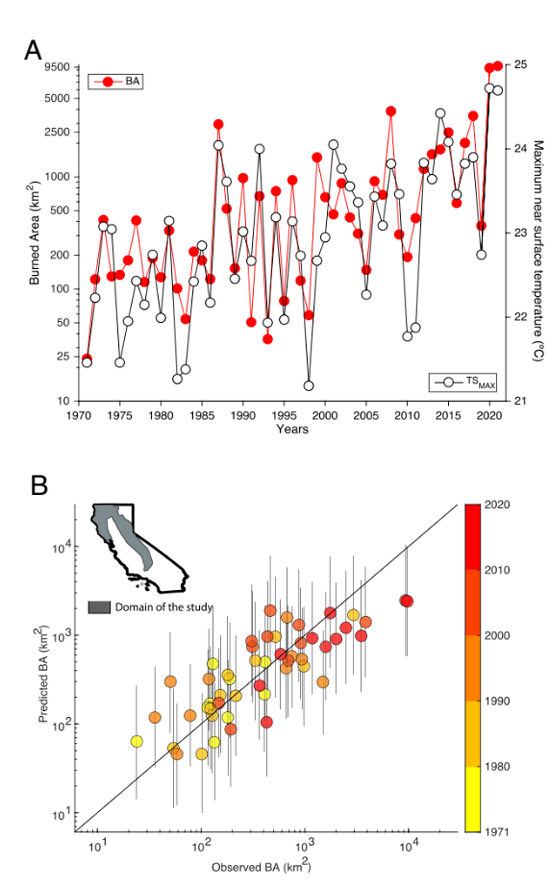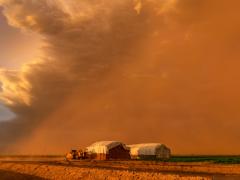Study Finds Climate Change to Blame For Record-Breaking California Wildfires
Record-breaking forest fires during California’s summer months have become a regular occurrence. Wildfires not only cause catastrophic environmental and socioeconomic impacts, but also have negative consequences for human health. Environmental observations indicate that summer burned areas in northern and central California have increased fivefold during 1996 to 2021 compared to 1971 to 1995. Further, 10 of the largest California wildfires have occurred in the last 20 years—five of which occurred in 2020 alone. While higher temperatures and increased dryness are thought to be the leading causes of increased burned areas, the extent to which burned area changes are due to natural variability or human-caused climate change has remained largely unresolved.
In a new NIDIS-funded study in Earth, Atmospheric, and Planetary Sciences, an international group of researchers created a climate-driven model of summer burned area evolution in California and combined it with natural and historical climate simulations to assess the importance of human-caused climate change on increased burned areas.
It was found that nearly all the observed increase in burned areas over the past half-century is due to human-caused climate change. It is estimated that from 1971 to 2021, human-caused climate change contributed to a +172% increase in burned areas, with a +320% increase from 1996 to 2021. In the coming decades, a further increase in annual forest burned areas is expected, ranging from 3% to 52%.

The authors of the study note that the results show the observed increase in burned areas in California’s forests is consistent with human-caused climate change and is unlikely to have resulted from natural variability alone. The results from this study are consistent with a NIDIS-funded study from 2021. In that study, researchers with the University of California, Los Angeles found that the leading cause of the rapid increase of wildfires over the western U.S. is the rapid increase of surface air vapor pressure deficit, or VPD, a measure of how thirsty the atmosphere is. The warming of surface temperature contributed 80% of the VPD increase across the western U.S between 1979–2020. Only 32% of the increase in VPD was caused by changes in weather patterns, which is mostly due to natural climate variability. The remaining 68% of the increase in VPD is explained by human-caused climate change.
These studies represent an important step toward overall accountability of the impacts of climate change. As the current state of knowledge suggests, and results strongly support, immediate action toward mitigating the impacts of climate change alongside proactive land management practices that can improve the resilience of forested landscape to wildfire will be necessary.
These studies were funded in part by NOAA's National Integrated Drought Information System (NIDIS) through the FY 2020 Modeling, Analysis, Predictions, & Projections (MAPP) program & NIDIS drought research competition. Learn more about this research, or read the journal article.








